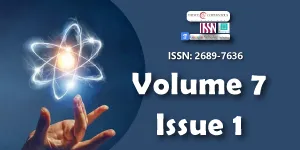Mathematical modeling of velocity field induced by the vortex
Main Article Content
Abstract
In new technological applications, it is important to use vortex distributions in the area for obtaining large velocity fields. This paper, it was calculated the distribution of the velocity field and distribution of stream function for ideal incompressible fluid, induced by a different system of the finite number of vortex threads: 1) circular vortex lines in a finite cylinder, positioned on its inner, 2) spiral vortex threads, positioned on the inner surface of the finite cylinder or cone, and 3) linear vortex lines in the plane channel, positioned on its boundary.
An original method was used to calculate the components of the velocity vectors. Such kind of procedure allows calculating the velocity fields inside the domain depending on the arrangement, the intensity, and the radii of vortex lines. In this paper, we have developed a mathematical model for the process in the element of Hurricane Energy Transformer. This element is a central figure in the so-called RKA (ReaktionsKraftAnlage) used on the cars’ roofs.
Downloads
Article Details
Copyright (c) 2024 Kalis H, et al.

This work is licensed under a Creative Commons Attribution 4.0 International License.
Licensing and protecting the author rights is the central aim and core of the publishing business. Peertechz dedicates itself in making it easier for people to share and build upon the work of others while maintaining consistency with the rules of copyright. Peertechz licensing terms are formulated to facilitate reuse of the manuscripts published in journals to take maximum advantage of Open Access publication and for the purpose of disseminating knowledge.
We support 'libre' open access, which defines Open Access in true terms as free of charge online access along with usage rights. The usage rights are granted through the use of specific Creative Commons license.
Peertechz accomplice with- [CC BY 4.0]
Explanation
'CC' stands for Creative Commons license. 'BY' symbolizes that users have provided attribution to the creator that the published manuscripts can be used or shared. This license allows for redistribution, commercial and non-commercial, as long as it is passed along unchanged and in whole, with credit to the author.
Please take in notification that Creative Commons user licenses are non-revocable. We recommend authors to check if their funding body requires a specific license.
With this license, the authors are allowed that after publishing with Peertechz, they can share their research by posting a free draft copy of their article to any repository or website.
'CC BY' license observance:
|
License Name |
Permission to read and download |
Permission to display in a repository |
Permission to translate |
Commercial uses of manuscript |
|
CC BY 4.0 |
Yes |
Yes |
Yes |
Yes |
The authors please note that Creative Commons license is focused on making creative works available for discovery and reuse. Creative Commons licenses provide an alternative to standard copyrights, allowing authors to specify ways that their works can be used without having to grant permission for each individual request. Others who want to reserve all of their rights under copyright law should not use CC licenses.
Brannan DA, Taha TS. On some classes of bi-univalent functions. In: SM. Mazhar, A Hamoui, NS. Faour (Eds.), Mathematical Analysis and Its Applications, Kuwait; February 18-21, 1985, in KFAS Proceedings Series. Pergamon Press (Elsevier Science Limited), Oxford, 1988; 3:53-60.
Bulut S. Coefficient estimates for initial Taylor-Maclaurin coefficients for a subclass of analytic and bi-univalent functions defined by Al-Oboudi differential operator. ScientificWorldJournal. 2013 Dec 29;2013:171039. doi: 10.1155/2013/171039. PMID: 24487954; PMCID: PMC3893868.
Duren PL. Univalent Functions, Grundlehren der Mathematischen Wissenschaften, Band 259, Springer-Verlag, New York, Berlin, Heidelberg and Tokyo, 1983.
Frasin BA. Coefficient bounds for certain classes of bi-univalent functions. Hacettepe Journal of Mathematics and Statistics. 2014; 43(3): 383-389.
Magesh N, Rosy T, Varma S. Coefficient estimate problem for a new subclass of biunivalent functions. J Complex Anal. 2013; 474231.
Jothibasu J. Certain Subclasses OF Bi-univalent Functions Defined By Salagean Operator. EJMAA. 2015; 3(1): 150-157.
Porwal S, Darus M. On a new subclass of bi-univalent functions. J Egyptian Math Soc. 2013; 21:190-193.
Orhan H, Magesh N, Balaji VK. Initial coefficient bounds for certain classes of meromorphic bi-univalent functions. Asian European J Math. 2014; 7(1):
Shabani MM, Hashemi Sababe S. On Some Classes of Spiral-like Functions Defined by the Salagean Operator. Korean J Math. 2020; 28: 137–147.
Shabani MM, Yazdi M, Hashemi Sababe S. Coefficient Bounds for a Subclass of Harmonic Mappings Convex in one direction. Kyungpook Math J. 2021; 61: 269-278.
Shabani MM, Yazdi M, Hashemi Sababe S. Some distortion theorems for new subclass of harmonic univalent functions. Honam Mathematical J. 2020; 42(4): 701–717.
Shabani MM, Hashemi Sababe S. Coefficient bounds for a subclass of bi-univalent functions associated with Dziok-Srivastava operator. Korean J Math. 2022; 30(1): 73–80.
Salagean GS. Subclasses of univalent functions, Lecture Notes in Math., Springer, Berlin. 1983; 1013: 362-372.
Srivastava HM, Murugusundaramoorthy G, Magesh N. On certain subclasses of biunivalent functions associated with hohlov operator. Global J Math Anal. 2013; 67–73.

